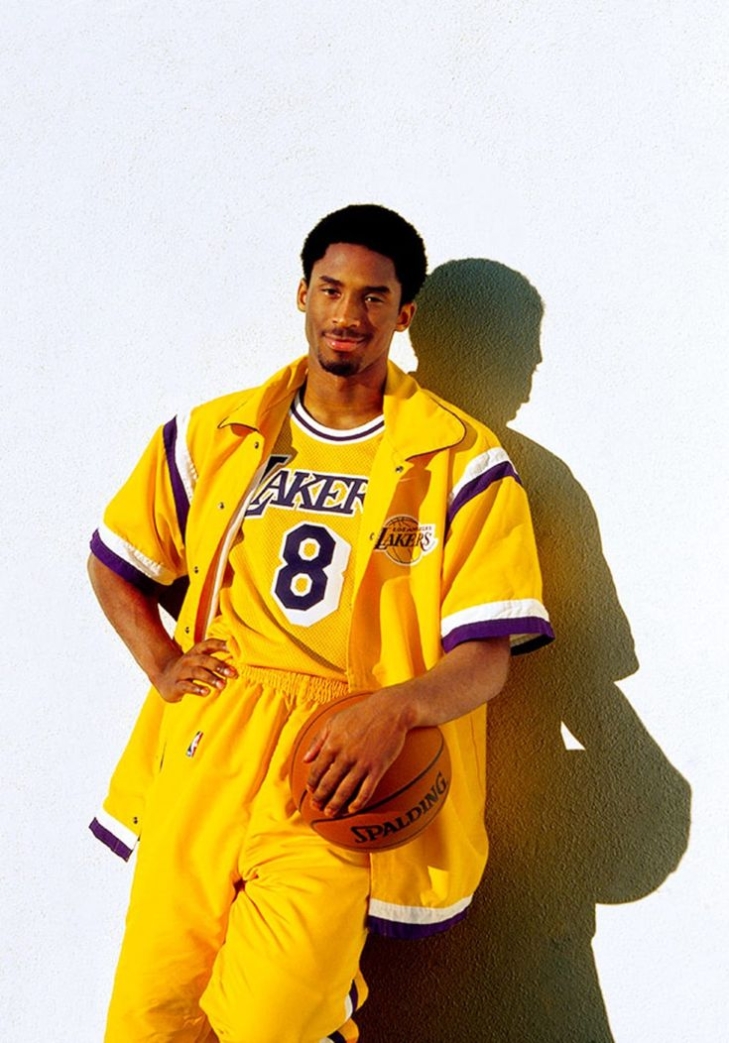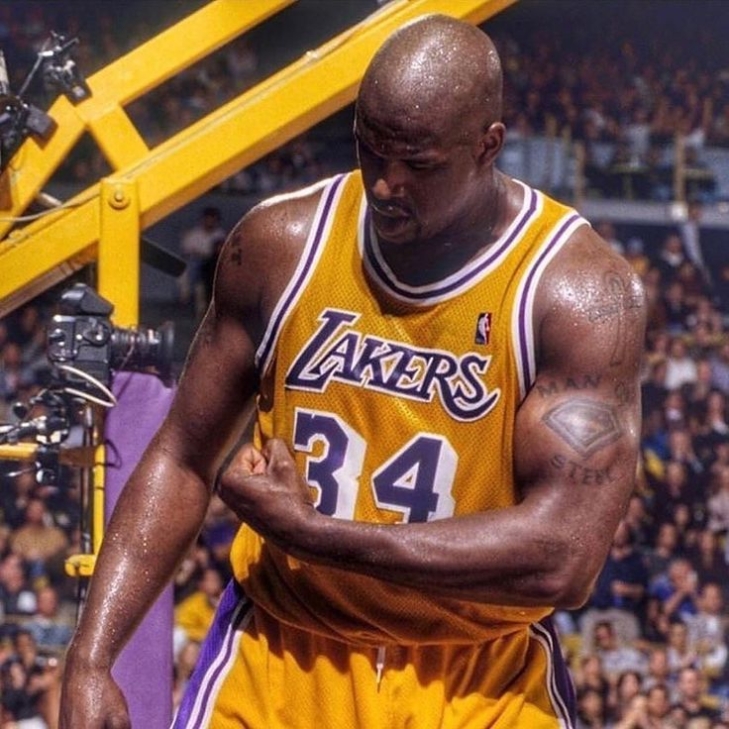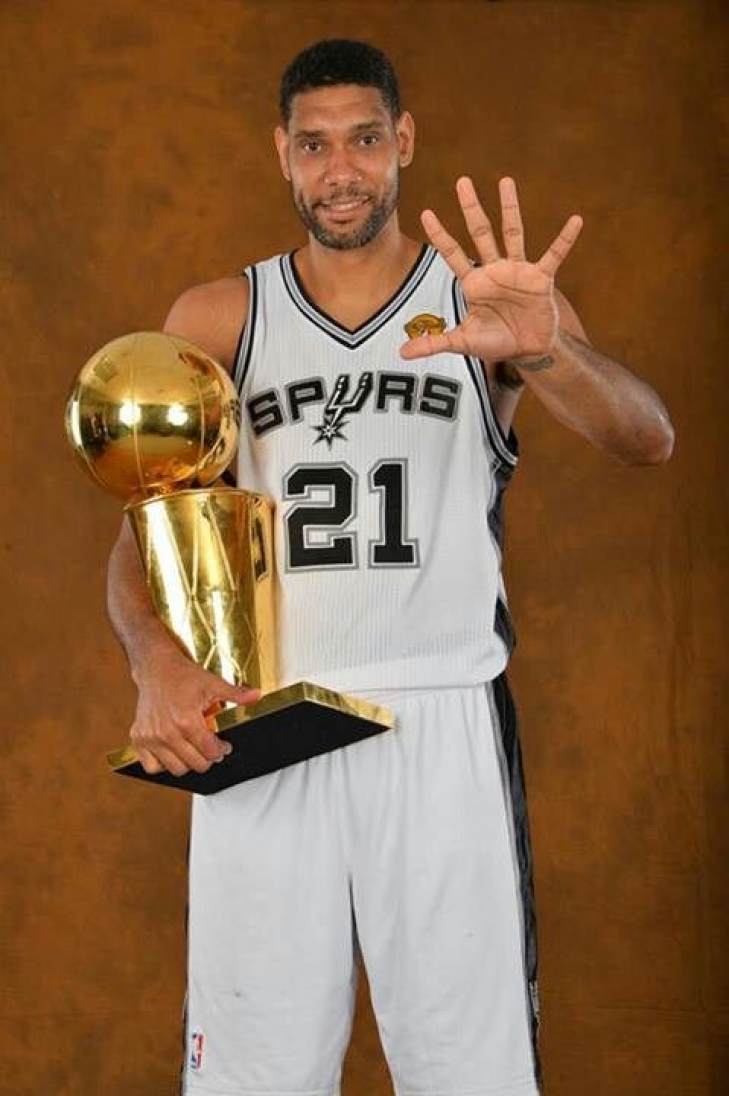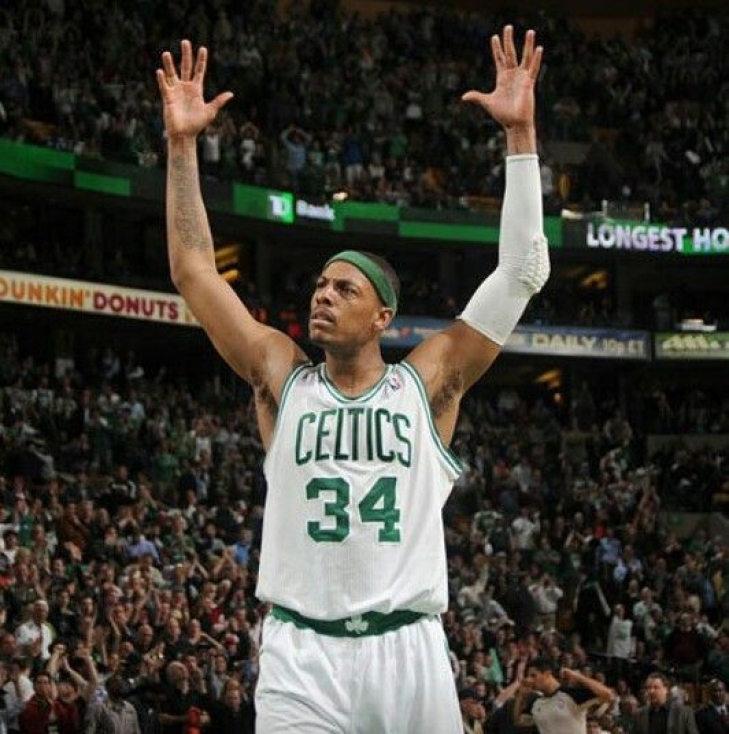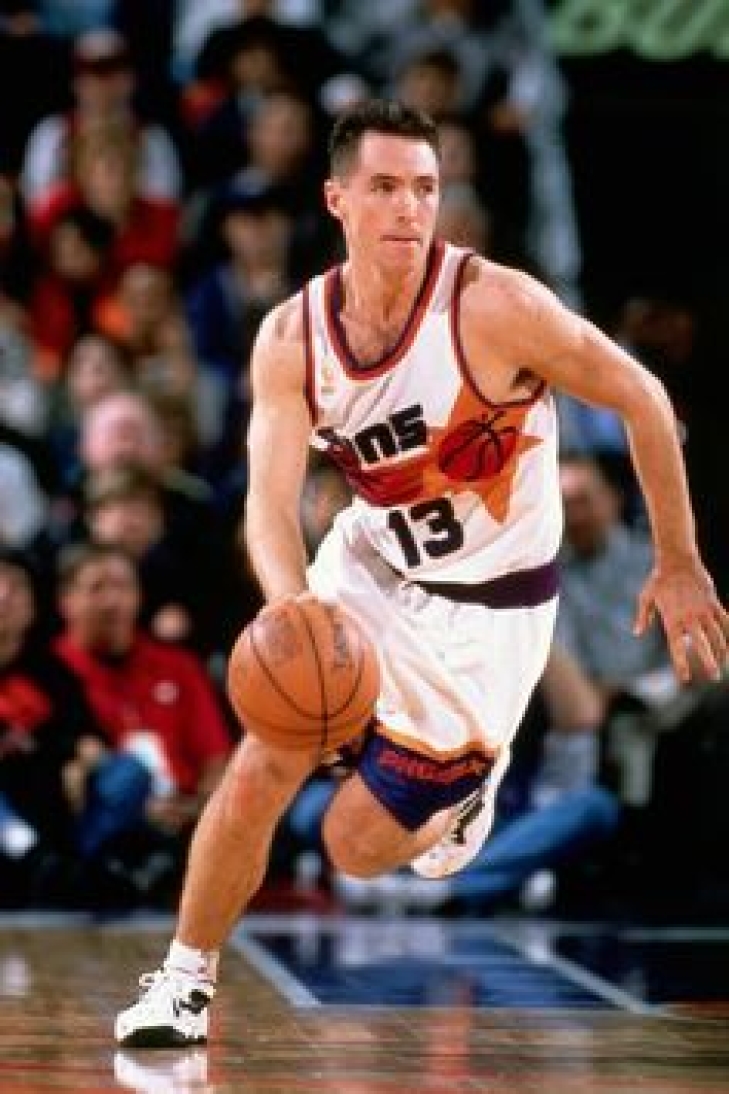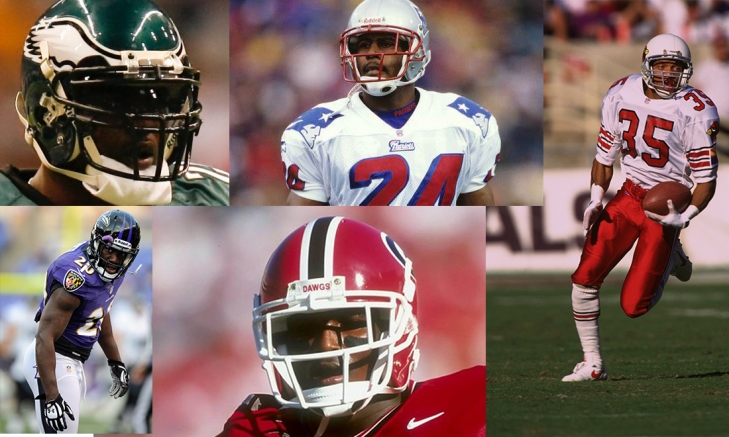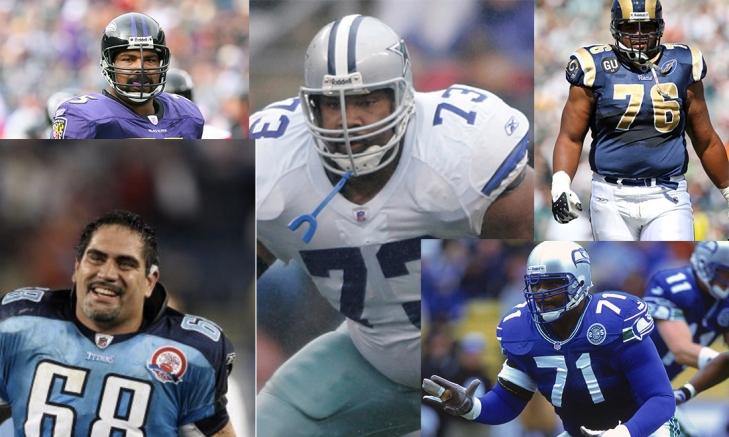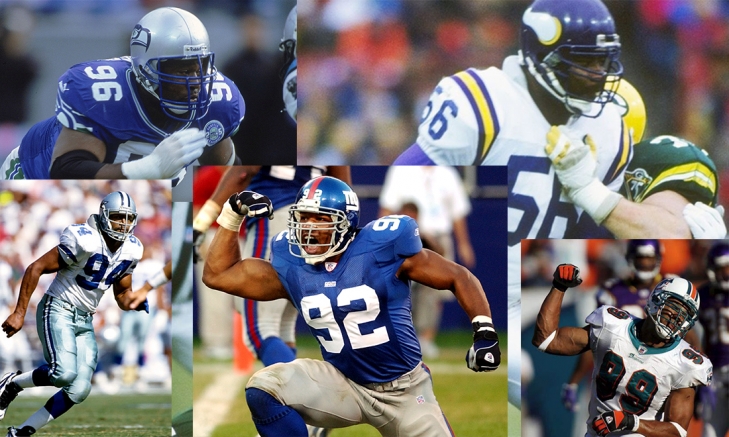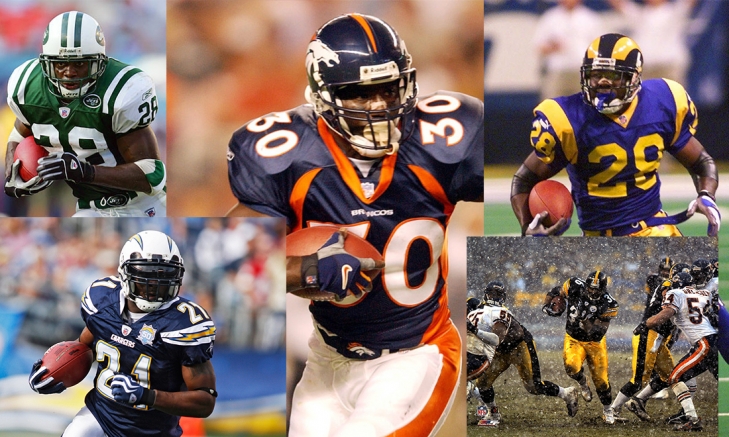Shooting Guard MPA
Please note that this does not necessarily reflect the last five Shooting Guards inducted but rather the previous five peak runs of that particular player. Also, we are going with what each player predominantly played. For some positions, we see very different players who bring unique skill sets, and at Shooting Guard, we often see them also play at the Point.
The five Shooting Guards we are using as the baseline are:
Vince Carter. Class of 2024 & Peak Period 1999-2000 to 2005-06: Carter also played a large part of his career at Small Forward (including his Peak Period) and, late in his career, was also used as a Power Forward.
Dwyane Wade. Class of 2023 & Peak Period 2004-05 to 2010-11: Wade occasionally played at Point Guard.
Manu Ginobili. Class of 2012 & Peak Period 2004-05 to 2010-11: Ginobili is a worthy Hall of Fame inductee, but his overall metrics are considerably lower than the other Shooting Guards on the bar.
Kobe Bryant. Class of 2020 & Peak Period 2005-06 to 2011-12: An occasional Small Forward, Bryant’s greatness and longevity jack up the Modern Positional Averages at this position.
Ray Allen. Class of 2018 & Peak Period 2002-03 to 2008-09: Allen was a pure Shooting Guard, and though he only retired in 2014, he will be the first one taken off once the next SG is indicted.
Peak Period is the best seven consecutive seasons by a player.*All-NBA have weighted points. 3 for the First Team, 2 for the Second Team, and 1 for the Third Team.
MVP and Defensive Player of the Year have weighted points. 10 for 1st Place, 9 for 2nd Place, 8 for 3rd Place, 7 for 4th Place, 6 for 5th Place, 5 for 6th Place, 4 for 7th Place, 3 for 8th Place, 2 for 9th Place and 1 for 10th Place.
All-Defensive have weighted points. 2 for the First Team, 1 for the Second Team.
Center MPA
Please note that this does not reflect the last five Centers inducted but rather the previous five peak runs of that particular player. Also, we are going with what each player predominantly played. For some positions, we see very different players who bring unique skill sets, and at Center, that is very much the case.
The five Centers we are using as the baseline are:
Pau Gasol. Class of 2023 & Peak Period 2008-09 to 2014-15: Gasol’s brother, Marc, is more associated with the Center position than Pau, but Pau played more minutes at Center than Power Forward, especially in his peak Lakers period.
Chris Bosh. Class of 2021 & Peak Period 2005-06 to 2011-12: Like Pau Gasol, Bosh played a lot of time at Power Forward and bluntly looks more like a PF than a C. Nevertheless, we have to go by what he logged more minutes at, and we have CB4 slotted here.
Ben Wallace. Class of 2021 & Peak Period 2000-01 to 2006-07: With Wallace and the next three, we do not doubt these are pure Centers! Wallace was not a scorer like the others, so he skews those metrics lower but elevates defensive averages.
Shaquille O’Neal. Class of 2016 & Peak Period 1994-95 to 2000-01: Shaq is the gold standard of these five, and when he falls off the recent five Centers, the bar metrics across the board will fall.
Yao Ming. Class of 2016 & Peak Period 2002-03 to 2008-09: Yao Ming is the opposite of Shaq, not because he wasn’t good, but because his career was so brief, it will have the opposite impact on the overall totals.
Peak Period is the best seven consecutive seasons by a player.*All-NBA have weighted points. 3 for the First Team, 2 for the Second Team, and 1 for the Third Team.
MVP and Defensive Player of the Year have weighted points. 10 for 1st Place, 9 for 2nd Place, 8 for 3rd Place, 7 for 4th Place, 6 for 5th Place, 5 for 6th Place, 4 for 7th Place, 3 for 8th Place, 2 for 9th Place and 1 for 10th Place.
All-Defensive have weighted points. 2 for the First Team, 1 for the Second Team.
Power Forward MPA
Please note that this does not reflect the last five Power Forward inducted but rather the previous five peak runs of that particular player. Also, we are going with what each player predominantly played. For some positions, we see very different players who bring unique skill sets, and just like at Center, that is very much the case for Power Forwards.
The five Power Forwards we are using as the baseline are:
Dirk Nowitzki. Class of 2023 & Peak Period 2004-05 to 2010-11: A career Dallas Maverick, Nowitzki also played some time at Center, but he was a Power Forward more often, especially in his peak period.
Chris Webber. Class of 2021 & Peak Period 1996-97 to 2002-03: Webber played most of his career at Power Forward, though he occasionally lined up at Center.
Tim Duncan. Class of 2020 & Peak Period 1999-2000 to 2005-06: Duncan was the hardest to classify. “Big Fundamental” arguably played more at Center throughout his career, but in his Peak Period, he was more of a Power Forward, hence why he is listed here and not at the five.
Kevin Garnett. Class of 2020 & Peak Period 1999-2000 to 2005-06: Garnett played mostly at Power Forward but, late in his career, was more a Center, and early in it, saw some time at Small Forward.
Dennis Rodman. Class of 2011 & Peak Period 1988-89 to 1994-95: Rodman is a fascinating name on this as not only did he play a significant part of his career as a Small Forward (including his peak period), but he was not a prolific scorer but a far more adept rebounder than the four other legends in his peer group. There will be a significant change in the statistical bar when he is removed from these five (and he will be the first to be removed once the next Power Forward is inducted).
Peak Period is the best seven consecutive seasons by a player.*All-NBA have weighted points. 3 for the First Team, 2 for the Second Team, and 1 for the Third Team.
MVP and Defensive Player of the Year have weighted points. 10 for 1st Place, 9 for 2nd Place, 8 for 3rd Place, 7 for 4th Place, 6 for 5th Place, 5 for 6th Place, 4 for 7th Place, 3 for 8th Place, 2 for 9th Place and 1 for 10th Place.
All-Defensive have weighted points. 2 for the First Team, 1 for the Second Team.
Small Forward MPA
Paul Pierce, Grant Hill, Tracy McGrady, Chris Mullin, Scottie Pippen
Please note that this does not necessarily reflect the last five Small Forwards inducted but rather the previous five peak runs of that particular player. Also, we are going with what each player predominantly played. For some positions, we see very different players who bring unique skill sets, and at Small Forward, they often see action in other roles.
The five Small Forwards we are using as the baseline are:
Paul Pierce. Class of 2021 & Peak Period 2004-05 to 2010-11: Pierce logged more minutes in the first half of his career as a Shooting Guard, which bled into significant time into his Peak Period.
Grant Hill. Class of 2028 & Peak Period 1994-95 to 2000-01: Hill also played at Shooting Guard, but unlike Pierce, there was no internal debate in slotting Hill at the three.
Tracy McGrady. Class of 2017 & Peak Period 2000-2001 to 2006-07: This was the trickiest one among our baselines. McGrady played just as much as a Shooting Guard, which includes our Peak Period. We could have easily placed T-Mac in the SG spot, and we will be open on this; the lack of Small Forwards recently inducted might have swayed this decision.
Chris Mullin. Class of 2011 & Peak Period 1987-88 to 1993-94: Mullin played more games as a Shooting Guard early in his career, but that did not occur in his peak period.
Scottie Pippen. Class of 2010 & Peak Period 1991-92 to 1997-98: Pippen is the only player here who was always a Small Forward, and we could arguably use him as a one-man bar for this spot for decades to come.
Peak Period is the best seven consecutive seasons by a player.*All-NBA have weighted points. 3 for the First Team, 2 for the Second Team, and 1 for the Third Team.
MVP and Defensive Player of the Year have weighted points. 10 for 1st Place, 9 for 2nd Place, 8 for 3rd Place, 7 for 4th Place, 6 for 5th Place, 5 for 6th Place, 4 for 7th Place, 3 for 8th Place, 2 for 9th Place and 1 for 10th Place.
All-Defensive have weighted points. 2 for the First Team, 1 for the Second Team.
Point Guard MPA
Please note that this does not necessarily reflect the last five Point Guards inducted but rather the previous five peak runs of that particular player. Also, we are going with what each player predominantly played. For some positions, we see very different players who bring unique skill sets, and at Point Guard, we often see them also play at Shooting Guard.
The five Point Guards we are using as the baseline are:
Chauncey Billups. Class of 2024 & Peak Period 2004-05 to 2010-11: Billups played significant time early and the end of his career as a Shooting Guard, but his Peak Period was all as a Point Guard.
Tony Parker. Class of 2023 & Peak Period 2006-07 to 2012-13: Parker’s career never deviated from the Point Guard position.
Jason Kidd. Class of 2018 & Peak Period 1997-98 to 2003-04: Kidd played Shooting Guard for some time, and his defensive numbers pushed the bar very high for other Point Guards.
Steve Nash. Class of 2018 & Peak Period 1997-98 to 2003-04: The two-time MVP only played at the Point.
Gary Payton. Class of 2013 & Peak Period 1993-94 to 1999-2000: Like Kidd, Payton’s defensive metrics help push those MPA numbers very high.
Peak Period is the best seven consecutive seasons by a player.*All-NBA have weighted points. 3 for the First Team, 2 for the Second Team, and 1 for the Third Team.
MVP and Defensive Player of the Year have weighted points. 10 for 1st Place, 9 for 2nd Place, 8 for 3rd Place, 7 for 4th Place, 6 for 5th Place, 5 for 6th Place, 4 for 7th Place, 3 for 8th Place, 2 for 9th Place and 1 for 10th Place.
All-Defensive have weighted points. 2 for the First Team, 1 for the Second Team.
Modern Positional Average
Safeties: Steve Atwater (2020), Brian Dawkins (2018), John Lynch (2021), Troy Polamalu (2020),
Note that in 2019, all Defensive Backs were grouped together, and were Champ Bailey, Brian Dawkins, Ty Law, Ed Reed, and Aeneas Williams. Cornerbacks and Safeties were split in 2020 but kept at four in both categories to keep everything modern. With the addition of Lynch, we now have four modern Safeties, resulting in significant changes.
Here are the statistics that we are using based on the last group of Safeties to enter the Pro Football Hall of Fame:
- Games Played: 182.5
- Approximate Value: 100.3
- Approximate Value per Games Played: 0.6041
- Games Started: 166
- Approximate Value per Games Started: 0.6848
- Approximate Value per Five-Year Peak: 61
- Approximate Value’s Best Five Results: 65
- Pro Bowls: 7.3
- First Team All-Pros*: 3
- Interceptions: 30
- Interceptions Five-Year Peak: 15.5
- Combined Tackles: 913
- Combined Tackles Five-Year Peak: 465.8
- Super Bowl Wins: 1.3
- Super Bowl Appearances: 1.5
*This is an aggregate of the Top Five finishes (5th = 1, 4th = 2, 3rd = 3, 2nd = 4th, 1st = 5)
**This is a reminder that the All-Pros we use are from the AP.
Modern Positional Average
Modern Positional Average
Cornerbacks: Champ Bailey (2019), Ty Law (2019), Ed Reed (2019), Charles Woodson (2021), Darrelle Revis (2021) & Ronde Barber (2021)
Note that in 2019, all Defensive Backs were grouped together, and were Champ Bailey, Brian Dawkins, Ty Law, Ed Reed and Aeneas Williams. Cornerbacks and Safeties were split in 2020, but kept at four in both categories to keep everything modern. Last year, Barber and Revis entered and with Bailey, Law & Reed entering in the same year, we have six comprsing the Modern Positional Average. As we progress forward, Interception numbers will likely decline as elite Corners are rarely thrown to.
Here are the statistics that we are using based on the last group of Cornerbacks to enter the Pro Football Hall of Fame:
- Games Played: 205.3
- Approximate Value: 139
- Approximate Value per Games Played: 0.6771
- Games Started: 199.2
- Approximate Value per Games Started: 0.6979
- Approximate Value per Five-Year Peak: 70.8
- Approximate Value’s Best Five Results: 74
- Top Five Defensive Player of the Year Finishes**: 4
- Pro Bowls: 7.8
- First Team All-Pros*: 3.5
- Interceptions: 51.7
- Interceptions Five-Year Peak: 26.5
- Top Five Interception Finishes**: 10
- Combined Tackles: 898.2
- Combined Tackles Five-Year Peak: 347.3
- Super Bowl Wins: 1.5
- Super Bowl Appearances: 1.2
*This is an aggregate of the Top Five finishes (5th = 1, 4th = 2, 3rd = 3, 2nd = 4th, 1st = 5)
**This is a reminder that the All-Pros we use are from the AP.
Modern Positional Average
Much like with what he had in exterior lineman, we have a convulted system where we try to look at the interior run-stuffers, while recognizing what that the front seven vary depending on scheme and player. With that, we have a unique situtation in that with Sam Mills, who was a late entrant in the modern vote, is not factored into the traditional statistics as his overall numbers are not complete. This means that we have an average of the four for most stats, which exclude Mills.
Here are the statistics that we are using based on the last group of Defensive Lineman/Linebackers/Interior Lineman to enter the Pro Football Hall of Fame:
- Games Played: 177.4
- Approximate Value: 151.8
- Approximate Value per Games Played: 0.8557
- Games Started: 174
- Approximate Value per Games Started: 0.8724
- Approximate Value per Five-Year Peak: 76.8
- Approximate Value’s Best Five Results: 83.2
- Top Five Defensive Player of the Year Finishes**: 7.8
- Pro Bowls: 7.8
- First Team All-Pros*: 4.4
- Interceptions: 16.8
- Interceptions Five-Year Peak: 8.8
- Quarterback Sacks: 28.9
- Quarterback Sacks Five-Year Peak: 15.8
- Tackles for Loss: 103.3
- Tackles for Loss Five-Year Peak: 53.5
- Forced Fumbles: 16.8
- Combined Tackles: 1,473.8
- Combined Tackles Five-Year Peak: 701.6
- Top Five Combined Tackles Finishes 14.2
- Super Bowl Wins: 0.4
- Super Bowl Appearances: 0.8
*This is an aggregate of the Top Five finishes (5th = 1, 4th = 2, 3rd = 3, 2nd = 4th, 1st = 5)
**This is a reminder that the All-Pros we use are from the AP.
Modern Positional Average
Tight Ends: Tony Gonzalez (2019), Shannon Sharpe (2011).
Please note that there are only two Tight Ends who have been inducted in the last two decades and we will base the average only on these two players. This should change in the next five years.
Here are the statistics that we are using based on the last group of Tight Ends to enter the Pro Football Hall of Fame:
- Games Played: 237
- Approximate Value: 126.5
- Approximate Value per Games Played: 0.5295
- Games Started: 211.5
- Approximate Value per Games Started: 0.5981
- Approximate Value per Five-Year Peak: 51.5
- Approximate Value’s Best Five Results: 53.5
- Pro Bowls: 11
- First Team All-Pros*: 5
- Receiving Yards: 12,593.5
- Receiving Yards Five-Year Peak: 4,885
- Top Five Receiving Yards Finish: 0
- Receiving Touchdowns: 86.5
- Receiving Touchdowns Five-Year Peak: 35
- Top Five Receiving Touchdown Finishes**: 2.5
- Receptions: 1,025
- Receptions Five-Year Peak: 384
- Top Five Receptions**: 3.5
- Super Bowl Wins 1.5
- Super Bowl Appearances 1.5
*This is an aggregate of the Top Five finishes (5th = 1, 4th = 2, 3rd = 3, 2nd = 4th, 1st = 5)
**This is a reminder that the All-Pros we use are from the AP.
Modern Positional Average
Offensive Linemen: Joe Thomas (2023), Tony Boselli (2022) Alan Faneca (2021), Steve Hutchinson (2020) and Kevin Mawae (2019).
As we progress in football analytics, it is easier to calculate the effectiveness of Offensive Lineman more than ever before. We will be adding more metrics in the future (time did not permit it for this year), but games are won and lost in the trenches, and football fans are visually divested there.
Here are the statistics that we are using based on the last group of Offensive Lineman to enter the Pro Football Hall of Fame:
- Games Played: 174.8
- Approximate Value: 188
- Approximate Value per Games Played: 0.6760
- Games Started: 173
- Approximate Value per Games Started: 0.6832
- Approximate Value per Five-Year Peak: 65.4
- Approximate Value’s Best Five Results: 68.0
- Pro Bowls: 7.8
- First Team All-Pros*: 4.8
- Super Bowl Wins 0.4
- Super Bowl Appearances 0.2
*This is an aggregate of the Top Five finishes (5th = 1, 4th = 2, 3rd = 3, 2nd = 4th, 1st = 5)
**This is a reminder that the All-Pros we use are from the AP.
Modern Positional Average
O.K.. This is tricky. Originally we were ironclad on positions in regards to how they appear on a stat sheet, but we were kidding ourselves. The front seven on any defensive corps are a rotating group of roles that are far more complicated to define than any offensive position. We made a significant change, focuing on pass rushers and interior lineman, but even then the myriad of roles renders it difficult especially when we are looking at matching current players with their ast five counterparts.
Take a look at Richard Seymour, who could do it all, but stat-wise does not fit into a category of either. This plays with the stat-line, but don't we know a Hall of Famer when we see it?
Here are the statistics that we are using based on the last group of Defensive Lineman/Linebackers/EDGE to enter the Pro Football Hall of Fame:
- Games Played: 206.8
- Approximate Value: 129.6
- Approximate Value per Games Played: 0.6267
- Games Started: 187
- Approximate Value per Games Started: 0.6930
- Approximate Value per Five-Year Peak: 61.8
- Approximate Value’s Best Five Results: 67.0
- Top Five Defensive Player of the Year Finishes**:4.6
- Pro Bowls: 7.2
- First Team All-Pros*: 2.8
- Quarterback Sacks: 114.1
- Quarterback Sacks Five-Year Peak: 52.8
- Top Five Quarterback Sacks Finishes: 6
- Tackles for Loss: 129.5
- Tackles for Loss Five-Year Peak: 65.4
- Top Five Tackles for Loss Finishes**: 7.2
- Combined Tackles: 570.2
- Combined Tackles Five-Year Peak: 248
- Forced Fumbles: 30
- Forced Fumbles Five-Year Peak 12.4:
- Super Bowl Wins 1.2
- Super Bowl Appearances 2.0
*This is an aggregate of the Top Five finishes (5th = 1, 4th = 2, 3rd = 3, 2nd = 4th, 1st = 5)
**This is a reminder that the All-Pros we use are from the AP.
We told you this is not perfect!
Modern Positional Average
Wide Receivers: Isaac Bruce (2020), Andre Johnson (2024, Calvin Johnson (2021), Randy Moss (2018), Terrell Owens (2018).
Has the Wide Receiver position not been the most backlogged offensive position for the Pro Football Hall of Fame for decades? This will only get harder with the increased receiving numbers we have seen over the past ten years, and we will see barring significant rule changes.
Here are the statistics that we are using based on the last group of Wide Receivers to enter the Pro Football Hall of Fame:
- Games Played: 197.4
- Approximate Value: 143.8
- Approximate Value per Games Played: 0.7285
- Games Started: 182.4
- Approximate Value per Games Started: 0.7475
- Approximate Value per Five-Year Peak: 66
- Approximate Value’s Best Five Results: 71.8
- MVP Top Five Finishes* **: 0.6
- Offensive Player of the Year Finishes* **: 3.2
- Pro Bowls: 6
- First Team All-Pros*: 3
- Receiving Yards: 14,526.6
- Receiving Yards Five-Year Peak: 6,539.6
- Top Five Receiving Yards Finish: 13.4
- Receiving Touchdowns: 122.2
- Receiving Touchdowns Five-Year Peak: 15,098
- Top Five Receiving Touchdown Finishes**: 15.8
- Receptions: 923.4
- Receptions Five-Year Peak: 430.4
- Top Five Receptions**: 7.4
- Super Bowl Wins 0.8
- Super Bowl Appearances 0.2
*This is an aggregate of the Top Five finishes (5th = 1, 4th = 2, 3rd = 3, 2nd = 4th, 1st = 5)
**This is a reminder that the All-Pros we use are from the AP.
Modern Positional Average
Running Backs: Jerome Bettis (2015), Terrell Davis (2017), Edgerrin James (2020), Curtis Martin (2012), LaDainian Tomlinson (2017).
The last five Running Backs who entered the Pro Football Hall of Fame are a talented group of individuals who redefined the running game, but as football moves even more toward the air, the bar set by these greats will make it harder for the current crop to gain induction.
Here are the statistics that we are using based on the last group of Running Backs to enter the Pro Football Hall of Fame:
- Games Played: 151.2
- Approximate Value: 121.4
- Approximate Value per Games Played: 0.8029
- Games Started: 137.2
- Approximate Value per Games Started: 0.8848
- Approximate Value per Five-Year Peak: 78.6
- Approximate Value’s Best Five Results: 86
- MVP Top Five Finishes* **: 4.2
- Offensive Player of the Year* **: 7.0
- Pro Bowls: 4.6
- First Team All-Pros*: 2
- Rushing Yards: 12,240
- Rushing Yards Five-Year Peak: 7,109.8
- Top Five Rushing Yards Finish 12.8
- Receiving Yards: 2,839
- Receiving Yards Five-Year Peak: 1,648.8
- Receiving Touchdowns: 9.2
- Yards From Scrimmage: 15,098
- Yards From Scrimmage Five-Year Peak: 8,740.6
- Top Five Yards From Scrimmage Finish: 11.4
- Touchdowns From Scrimmage: 90.8
- Top Five Touchdowns From Scrimmage Finish: 9.2
- Super Bowl Wins 0.6
- Super Bowl Appearances 0.8
*This is an aggregate of the Top Five finishes (5th = 1, 4th = 2, 3rd = 3, 2nd = 4th, 1st = 5)
**This is a reminder that the All-Pros we use are from the AP.
Modern Positional Average
Quarterbacks: Troy Aikman (2006), Brett Favre (2016), Peyton Manning (2021) Dan Marino (2005), Kurt Warner (2017), Steve Young (2005).
Ah, the Quarterback. As Coach Tony D’Amato said in “Any Given Sunday,” it is the most important position in the game. It has also changed the most over the last 40 years.
The last group of QBs that have entered Canton would relish the modern game. Pivots have been blessed with more advantageous rule changes, so passing metrics have skyrocketed. We also see far more mobile QBs than ever before, with their rushing numbers increasing. As Aikman, Marino, and Young are more products of the previous era, when they depart the last five instead of players like Tom Brady and Drew Brees, the Modern Positional Average will fall more in line with what we see now. Until then, we have to keep that in mind!
To help reflect the changing game, we are looking at the Top Five finishes in traditional stats. We will be able to examine more advanced stats in the future, but as this is a recent addition, we can’t do that to the best of our wishes.
Here are the statistics that we are using based on the last group of Quarterbacks to enter the Pro Football Hall of Fame:
- Games Played: 211.3
- Approximate Value: 191.3
- Approximate Value per Games Played: 0.9053
- Games Started: 204.5
- Approximate Value per Games Started: 0.9353
- Approximate Value per Five-Year Peak: 83.67
- Approximate Value’s Best Five Results: 86
- MVP Top Five Finishes* **: 172
- Offensive Player of the Year* **: 14.3
- Pro Bowls: 8.5
- First Team All-Pros*: 3
- Passing Yards: 50,592
- Passing Yards Five-Year Peak: 19,370
- Top Five Passing Yards Finish*: 24.2
- Touchdown Passes: 345.3
- Touchdown Passes Five-Year Peak: 145.8
- Top Five Touchdown Pass Finish*: 25.7
- Interceptions: 202.5
- Touchdown-INT Ratio: 1.68
- Completion Percentage: 63.0%
- Completion Percentage Peak: 64.80%
- Top Five Completion Percentage Finish*: 23.3
- Passer Rating: 90.2
- Top Five Passer Rating Finish*: 21.8
- Rushing Yards 1392.2
- Rushing Touchdowns 16
- Super Bowl Wins 1.6
- Super Bowl Appearances 2.8
*This is an aggregate of the Top Five finishes (5th = 1, 4th = 2, 3rd = 3, 2nd = 4th, 1st = 5)
**This is a reminder that the All-Pros we use are from the AP.


